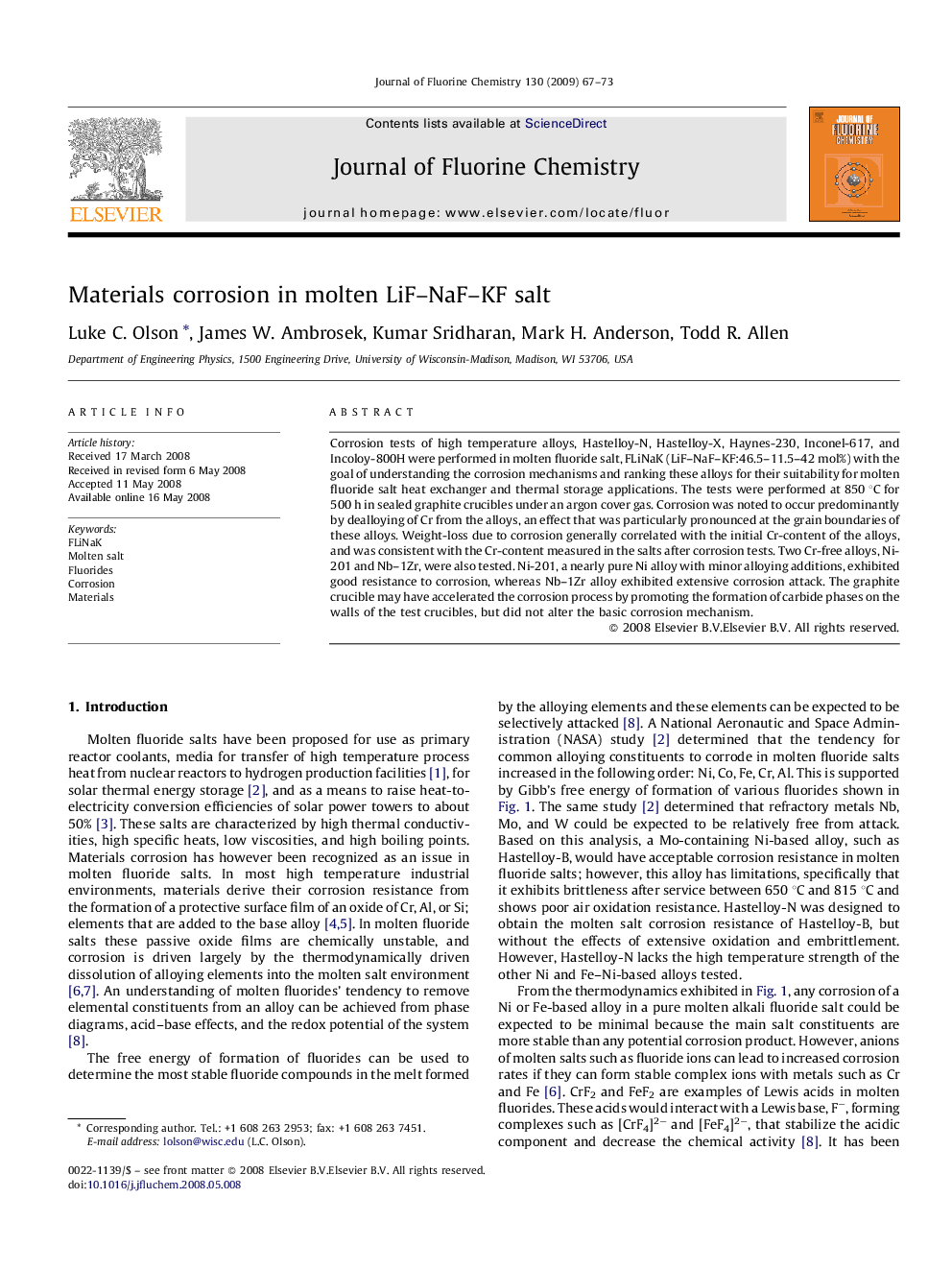| Article ID | Journal | Published Year | Pages | File Type |
|---|---|---|---|---|
| 1315537 | Journal of Fluorine Chemistry | 2009 | 7 Pages |
Corrosion tests of high temperature alloys, Hastelloy-N, Hastelloy-X, Haynes-230, Inconel-617, and Incoloy-800H were performed in molten fluoride salt, FLiNaK (LiF–NaF–KF:46.5–11.5–42 mol%) with the goal of understanding the corrosion mechanisms and ranking these alloys for their suitability for molten fluoride salt heat exchanger and thermal storage applications. The tests were performed at 850 °C for 500 h in sealed graphite crucibles under an argon cover gas. Corrosion was noted to occur predominantly by dealloying of Cr from the alloys, an effect that was particularly pronounced at the grain boundaries of these alloys. Weight-loss due to corrosion generally correlated with the initial Cr-content of the alloys, and was consistent with the Cr-content measured in the salts after corrosion tests. Two Cr-free alloys, Ni-201 and Nb–1Zr, were also tested. Ni-201, a nearly pure Ni alloy with minor alloying additions, exhibited good resistance to corrosion, whereas Nb–1Zr alloy exhibited extensive corrosion attack. The graphite crucible may have accelerated the corrosion process by promoting the formation of carbide phases on the walls of the test crucibles, but did not alter the basic corrosion mechanism.
Graphical abstractCorrosion tests of high temperature alloys were performed in molten salt, FLiNaK (LiF–NaF–KF:46.5–11.5–42 mol%) at 850 °C for 500 h in sealed graphite crucibles under an argon cover gas with the goal of understanding corrosion mechanisms and ranking these alloys for suitability in a molten salt heat exchanger.Figure optionsDownload full-size imageDownload as PowerPoint slide
